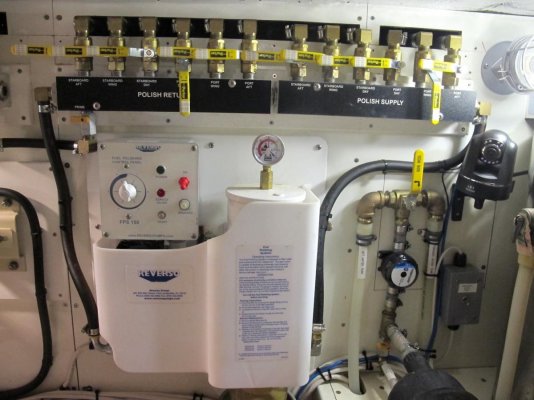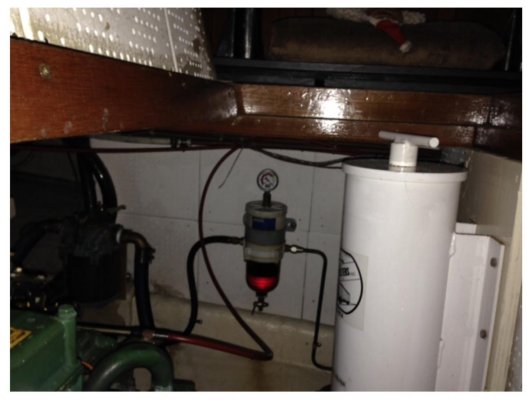angus99
Guru
I have an inefficient home-built fuel polishing system that allows me to pull fuel from and return it to any of the three fuel tanks. Each morning, I filter some fuel from the saddle tanks and pump it to the aft centerline tank—which I use as a day tank. That fuel goes through the usual primary Racor 500 (10 micron) and secondary NAPAs (currently also 10 microns but rethinking these) on each Lehman.
The aft tank was cleaned and I inspected it recently but the Racors still load up more than I think they should—probably in 80 to 100 hours. I think the home-made paper towel polishing filter is the culprit. I plan to replace it with a Gulf Coast F1 filter and, while I’m at it, install a new transfer pump.
What’s the consensus on the GC F1? Worth the exhorbitant cost? I’ve seen Walbro and Oberdorfer fuel pumps recommended for this. Walbro seems to have a lot of models with very little difference between them—the biggest of which moves about 43 gallons per hour. I’d like to move more like 50 gallons in 30 minutes to reduce transfer time while keeping the pump at 12 volts. Any thoughts?
The aft tank was cleaned and I inspected it recently but the Racors still load up more than I think they should—probably in 80 to 100 hours. I think the home-made paper towel polishing filter is the culprit. I plan to replace it with a Gulf Coast F1 filter and, while I’m at it, install a new transfer pump.
What’s the consensus on the GC F1? Worth the exhorbitant cost? I’ve seen Walbro and Oberdorfer fuel pumps recommended for this. Walbro seems to have a lot of models with very little difference between them—the biggest of which moves about 43 gallons per hour. I’d like to move more like 50 gallons in 30 minutes to reduce transfer time while keeping the pump at 12 volts. Any thoughts?





